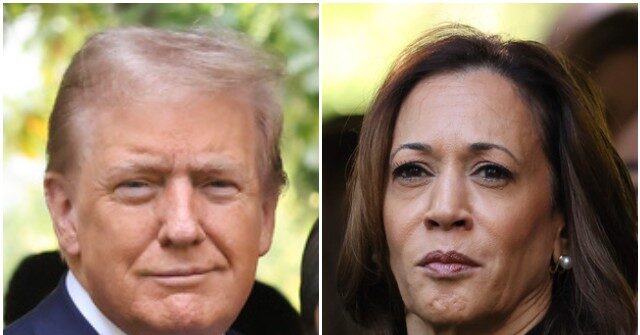A recent Rasmussen Reports survey indicates that likely voters have a slight preference for former President Donald Trump over Vice President Kamala Harris regarding the presidential election outcome in November. The survey asked participants whom they believed was most likely to win, regardless of their voting intentions, revealing that 45% of likely voters think Trump will triumph compared to 43% for Harris. Additionally, there remains a group of undecided voters, constituting 11% of the respondents. This trend highlights a heightened sense of confidence in Trump’s prospects among voters, showcasing the divisions in perception of the two candidates.
The survey results reveal stark contrasts in opinions when broken down by party affiliation. Among Democrats, a significant 76% believe that Harris will win, while only 16% see Trump as the likely victor, with 7% unsure. In contrast, among Republicans, 77% support the notion that Trump is likely to win, whereas just 16% entertain the possibility of Harris’s success, with 7% remaining uncertain. This party allegiances’ clear divide signifies the entrenched views held by both Democratic and Republican voters heading into the elections.
Independent voters, who often play a critical role in determining election outcomes, show a preference leaning towards Trump, with 45% believing he will win compared to 36% for Harris. The demographic of undecided voters also skews toward Trump, with 35% perceiving him as the likely winner while only 3% expect Harris to achieve victory. Such insights into independent voter sentiment could have significant implications for campaign strategies as both parties vie for their support leading up to the election.
Adding to the complexity of the electoral landscape, a Marist poll uncovered Trump’s growing leads amongst independent voters, with 50% support against Harris’s 46%. The findings also illustrated differences in voter behavior based on election methods. For those opting for mail-in or absentee ballots, Harris holds a commanding lead, receiving 71% support from these voters compared to Trump’s 28%. However, the dynamics shift significantly on Election Day, where Trump captures 58% of the traditional in-person voters while Harris garners only 40%. This indicates that voter mobilization strategies will be crucial, particularly for Harris, as different demographics engage in varying voting methods.
Racial demographics also affect voter preferences, as Trump leads among white voters with 53% versus Harris’s 45%. Conversely, Harris has a substantial edge over Trump among non-white voters, obtaining 60% support compared to Trump’s 39%. Nonetheless, her appeal among these voters trails behind former President Joe Biden’s performance in 2020, where he received 71% support among non-white voters. The shifts in demographic support highlight critical areas of focus for candidate appeal, illustrating the need for refined outreach strategies to mobilize voters across various groups.
As both candidates prepare for the November election, the findings are framed against the backdrop of Trump’s upcoming rally in Butler, Pennsylvania. This event comes nearly three months following a significant incident involving an assassination attempt on Trump. The rally not only serves as a platform for Trump to rally his supporters but also as an opportunity to commemorate the life of a local hero, firefighter Corey Comperatore, who tragically lost his life during the events surrounding the assassination attempt. Such moments resonate deeply within campaign narratives and can influence voter sentiment and turnout as Election Day approaches.

